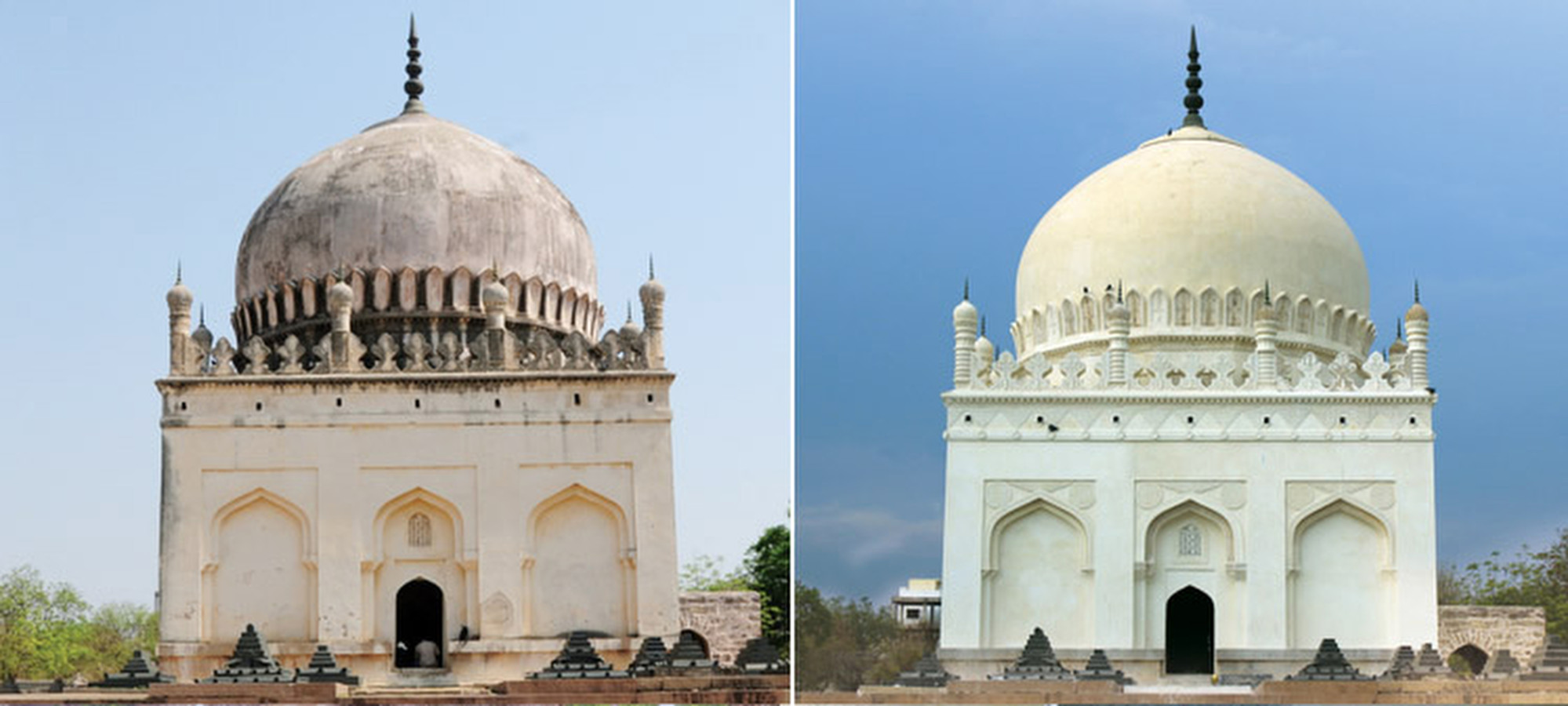
On the outskirts of Hyderabad, a house of the useless has been introduced again to life.
The necropolis is eerie in theme, big in stature, magnificent in design and now key to the expansion of tourism on this metropolis.
The Sixteenth-century Qutb Shahi Tombs advanced is the most important such website in southern India, and its 10-year renovation is nearing completion.
About 100 vital buildings – tombs, funerary mosques and a mortuary bathtub – dot this 106-acre necropolis, which is the everlasting dwelling of the Qutb Shahis, the Islamic dynasty that based Hyderabad and dominated the huge Golconda Kingdom from 1518 to 1687.

Measuring as much as 40 metres (130 ft) tall, the 40 granite tombs are adorned with domes, finials, minarets, columns, archways and complicated stonework. Collectively they’re so placing and vital that the advanced is on the tentative record for Unesco World Heritage standing.
But after I first visited seven years in the past, this surprise was in decay. Weeds owned its paths, cracks sullied its facades, bulges marred its ceilings and climate had stained each construction.
India’s cruise trade sees buoyant future, however blue financial system not so inexperienced
India’s cruise trade sees buoyant future, however blue financial system not so inexperienced
Quickly after I left, the cavalry arrived, wielding chisels, hammers and paint brushes. Lots of of expert artisans led a challenge overseen by the Telangana State Authorities and the Aga Khan Belief for Tradition – an NGO that safeguards Muslim cultural heritage within the growing world – to revive the necropolis to its former glory.
It was a frightening activity. Researchers had taken 3D laser scans of every tomb, mosque, pavilion, stepwell and hammam bathtub, and ready 2,500 measured drawings of the positioning primarily based on archival info.
Then the tradesmen took over.
In repairing the buildings they used strategies, instruments and supplies – such lime mortar combined with milk and egg whites – just like these the unique craftsmen would have employed.

Once I returned to Hyderabad this 12 months, the outcomes have been bewitching. Neat landscaping and contemporary paths surrounded the important thing buildings, a lot of which had been meticulously refreshed. Notably spectacular was the brilliance of the tombs’ stuccowork, which was laden with intricate geometric and floral motifs.
Freshly renovated mouldings and lattice home windows have enhanced the grandeur of the mausoleums’ interiors. The enhancements provide guests a greater sense of simply how grand this necropolis was when it was constructed.
The restoration and enhancement challenge can be full when the Backyard Amphitheatre venue and the Qutb Shahi Interpretation Centre, a museum, have been completed. It’s hoped that what’s now known as the Qutb Shahi Heritage Park will assist draw guests to Hyderabad.
The Telangana state capital, Hyderabad is maybe India’s most neglected vacation spot. Few different Indian cities have a historic precinct as big, distinctive and photogenic as that which encompasses the necropolis and the adjoining Golconda Fort, a 700-year-old citadel sprawled throughout a hillside. These two websites have been the core of the Golconda sultanate.

Till the interpretation centre opens, guests to the Qutb Shahi Heritage Park can study extra of the positioning’s historical past in a short lived museum that, by means of textual content, images, maps and movies, tells the bloody story of the Qutb Shahis, who fought a number of rival empires and dug the world’s first diamond mine.
Buried beneath the towering Tomb of Quli Qutb-ul-Mulk is the person who began all of it. The sultan’s closing resting place stands on a sq., cream-coloured base beautified by ornamental arches and is topped by hand-carved minarets and an onion-shaped dome.
After emigrating from Persia, Qutb-ul-Mulk grew to become a senior determine in India’s Bahmani sultanate, a Sunni Muslim empire that dominated the Deccan Plateau, in South India. A need for energy drove him to ascertain the Golconda sultanate, which conquered Bahmani.

For 169 years, the dynasty commanded a swathe of southern India. Utilizing its diamond wealth, the sultanate expanded to rule over an space 700km huge and 750km lengthy (435 miles by 466 miles), in keeping with an illustration on the museum.
Eight emperors from Qutb-ul-Mulk’s bloodline dominated Golconda earlier than it was annexed by the Mughal empire.
Resting on this necropolis are the souls of not simply these Qutb Shahi emperors but in addition their wives, family members and the dynasty’s the Aristocracy, commanders, medical doctors and courtesans. These of royal blood reside within the tombs; the others are buried inside or subsequent to the funerary mosques.
Additionally restored are the necropolis’ six stepwells, or baolis, initially dug to irrigate the advanced’s orchards. One in every of them, the hulking Idgah Baoli, is a granite construction that descends 25 metres under the bottom and is able to holding 2.8 million litres of water.

The stepwells at the moment are useful once more, having been deserted for hundreds of years. They provide water for the continued renovations, and the revival of the positioning’s gardens.
About 10,000 mango, chikoo, jamun and reetha bushes have been planted to imitate the luxurious groves that existed right here 400 years in the past – their future fruit destined to be the ending touches on the rebirth of this memorial to the useless.